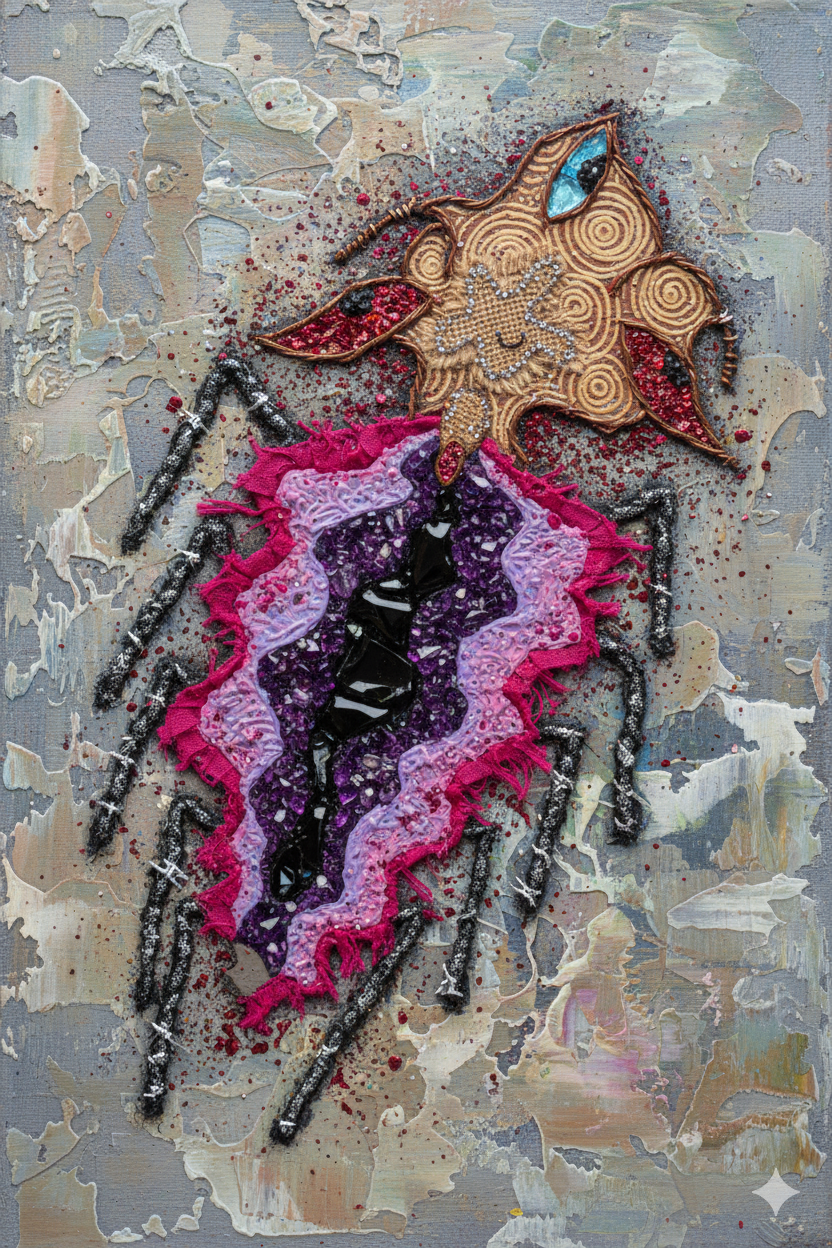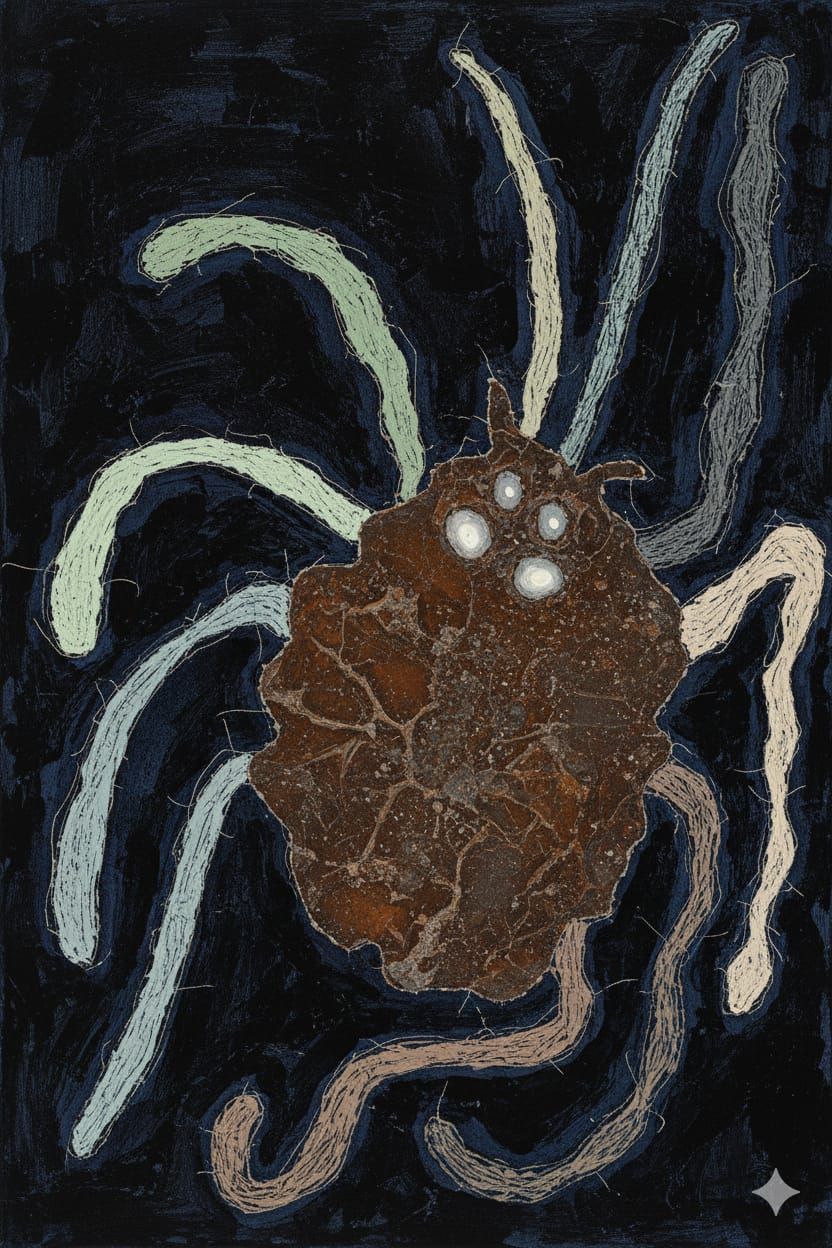Puja Lights
9/24/2025

There’s a peculiar sort of madness that descends upon Calcutta—pardon me, Kolkata—come autumn, albeit a floody and messy one this time around. The air, thick with the scent of wilted shiuli flowers and frying luchis in banned hydrogenated oils, begins to crackle with an orgasmic energy that is part reverence, part city-wide block party, part ritual masturbation at a mob scale. At the heart of this glorious chaos is, of course, Ma Durga, the largest vagina known to mythology who has beef with the beefiest beef the buffalo and comes with her family of children gods. But in this temporary fiction, playing a dazzling, electrifying supporting role is the light. By Durga, the light. Without it no lazy Bengali can be convinced to even turn from his smartphone, these days. Durga is like any other twat, a selfish concentrate of collapsing concentrics of concubine cunt forms idolized as a superstar that likes self-publicity and likes to make promises she’s never going to fucking keep. It’s just Bengalis, as a spineless race, are too foolish to see through her transparent skullduggery, because in private we are made from the same distasteful twat-cum-marmalade shit paste— all superficial patina gloss, but underneath it’s a city that doesn’t even have proper drainage, and every year we are drowning in neighborly feces and urine love while the government sinecures grow fat at our expense.

Having sampled very few people and places, I still know the astonishing ranges between good and bad people that I try to draw a few from time to time. And because evolution has equipped us to remember the darker experiences longer, I linger on the shady characters more, which is why you have very few pretty people smiling back at you. So here is Asura, Durga’s arch nemesis. Definitely not a smile!!!

I am like a cow; I chew my cud, mostly malignant, narcissistic, selfish, half-chewed drivel from previous sessions. I am certainly not a holy cow, because in those thoughts are excretory and human reproductive organs splayed out in orgies of orgasms that wouldn’t be religiously allowed by the prudish pubic mustaches or beards who are at the helm of these scams. Anyway, the point is I have repetitions of repetitive thoughts, and so none of the heroes or villains in my life have changed, and I am still at the center of this vomit-chewing, perpetual cauldron of no escape. But I’d like to keep my ruminations to a minimum and get on with the physics. We talk about ‘seeing’ the Puja, but I wonder if we ever truly consider what an astonishing feat that is. We wander from pandal to pandal, our senses besieged by a luminous spectacle—gateways of pure, shimmering light that seem to defy gravity, cascading waterfalls of blue and green that aren’t wet, and deities outlined in auras so bright they hum. It’s a visual symphony. And like any great symphony, it’s the product of a thousand unseen artists and unspoken laws, a grand conspiracy between the unblinking eye of physics and the wonderfully gullible theatre of the human brain.
So, for a moment, let’s peel back the curtain. Let’s take a stroll not just down a lane of glittering pandals, but into the very mechanics of this magic. What exactly is going on when a string of cheap diodes from Chandni Chowk manages to convince our sophisticated primate brain that a galloping horse is made of pure light?
Before we can appreciate the light show, we must first appreciate the equipment we bring to the theatre: our eyes. The human eye is a marvel, an organ of exquisite complexity that began its evolutionary journey as a simple light-sensitive spot on some primordial creature. Today, it’s a globe of jelly and nerve endings that can distinguish millions of colors, but it’s also, bless its heart, a bit of a dupe.
Everything we “see” is just our brain’s best guess. Light, in the form of tiny, indefatigable packets of energy called photons, travels from a source—say, a dazzling LED recreation of the Eiffel Tower on a Deshapriya Park mud field—and barrels into our eyeballs. These photons have a specific wavelength, , and frequency, , which are inversely related by the speed of light, , in the classic equation . The energy of each photon, (where is Planck’s constant), determines what our brain will eventually call “color.”
This photon-stream slams into the back of your eye, a delicate screen called the retina. Here, the real alchemy begins. The retina is carpeted with about 126 million photoreceptor cells, a veritable stadium crowd of two types: rods and cones. Rods are the masters of monochrome, brilliant at detecting motion and seeing in low light (hence that ghostly, colorless world you inhabit during a late-night fridge raid). But the heroes of our Puja story are the cones.
You have about six million cones, and they are the divas of vision—color-sensitive and concentrated in the center of your retina. They come in three fabulous varieties, each tuned to a specific range of light wavelengths: one for blues (short-wavelengths), one for greens (medium-wavelengths), and one for reds (long-wavelengths).
This is where it gets clever. The riot of colors you see in a pandal—the vermillion reds, the sapphire blues, the emerald greens—isn’t really out there. When you gaze upon a light, your three types of cones get excited to varying degrees. A “yellow” light, for instance, tickles both your red and green cones just so. Your brain receives these signals—“Red cone is firing at 80%, Green cone at 75%, Blue cone is having a nap”—and synthesizes this information into the subjective experience of ‘yellow’. It’s less a window onto reality and more an internal, biological Pollack painting.
The lights of Durga Puja are a masterclass in exploiting this system. Modern LEDs (Light Emitting Diodes) are particularly good at this. Unlike an old-fashioned incandescent bulb, which is essentially a hot, glowing wire that wastes most of its energy as heat and produces a broad, messy spectrum of light, an LED is a sniper. It’s a semiconductor device that emits photons of a very specific wavelength.
An LED that is designed to be “blue” releases a torrent of photons with a wavelength of around 450 nanometers. This directly and powerfully stimulates your blue-sensitive cones, and very little else. The result is a color that appears stunningly pure and saturated, an almost impossibly deep blue that old tungsten bulbs could only dream of. The entire vibrant palette of Puja lighting is built on this principle: mixing the precise outputs of red, green, and blue LEDs to tickle our cones in just the right way to create every color imaginable.
But before the reign of the ruthlessly efficient LED, another character held the stage. You still see it painting the outlines of many a pandal or buzzing quietly in old shop signs. I’m talking about the noble gas tube, what we generically and rather unfairly call a ‘neon light’. Unfairly, because neon is just one member of a very exclusive, very aloof family of elements from the far-right column of the periodic table.
These are the noble gases—helium, neon, argon, krypton, xenon. They are the aristocrats of the atomic world, defined by their utter refusal to mingle. Their electrons are arranged in perfectly complete, stable shells, leaving them with no desire to bond or react with the riff-raff of other elements. They are perfectly content.
To make them do something as vulgar as glow, you have to get violent.
Imagine a glass tube filled with, say, neon gas. At each end is an electrode. When you apply a ferociously high voltage, the placid atomic society within the tube is thrown into chaos. The voltage rips electrons away from some atoms, creating a soup of positively charged ions and free, renegade electrons. This electrified gas is a plasma.
A free electron, spurred on by the electric field, goes careening through the tube and—thwack—it collides with a neutral neon atom. This transfers enough energy to kick one of the atom’s own electrons up to a higher, unstable energy level—a sort of precarious, high-rent apartment it can’t afford. The atom is now ‘excited’.
But nature abhors an unstable living situation. Within a microsecond, the excited electron falls back home to its original, comfortable orbit. To do this, it must shed that extra energy. It does so by spitting out a single, indivisible packet of light: a photon.
Here’s the beautiful, quantum-mechanical kicker. The energy gap between the excited state and the ground state is a fixed, specific amount for every single neon atom. It’s a fundamental property. And since a photon’s energy dictates its color (), every photon emitted by every relaxing neon atom has the exact same energy, and therefore the exact same colour: a brilliant, unmistakable, traffic-stopping reddish-orange.
That piercing blue light you see? That’s likely not neon at all, but its cousin, argon. That pale lavender? Krypton. Each noble gas sings in its own unique key, emitting its own signature color based on the specific spacing of its electron orbitals. It’s not just a light; it’s an atomic fingerprint, glowing for all to see.
But what about the movement? The galloping horses, the dancing figures, the welcoming goddess who appears to raise her hand in blessing? This is where the story moves from the biology of the retina to the psychology of the brain, and a wonderful flaw in our processing called persistence of vision.
Our visual system isn’t a continuous video camera. It takes snapshots. It can process about 10 to 12 separate images per second, perceiving them individually. But when images are flashed faster than this, our brain can’t keep up. It gets flustered and does a wonderfully pragmatic thing: it cheats. It blurs the individual flashes together, creating the illusion of continuous motion. The minimum speed at which this happens is called the flicker fusion frequency.
The dazzling animations of Puja lighting are nothing more than a series of lights—sometimes thousands of them—being switched on and off with ferocious speed by a micro-controller. A single “frame” of the galloping horse is lit up for a fraction of a second, then it’s switched off and the next frame is lit. This Illusion of Motion is given by
This rapid-fire deception is what transforms static grids of bulbs into fluid, dynamic scenes. The “smoothness” of the motion is a testament to how quickly the lights can be cycled. Old incandescent bulbs were sluggish; they had to heat up and cool down. LEDs, however, are nimble. They can be turned on and off almost instantaneously, allowing for incredibly complex and high-frame-rate animations that our wonderfully lazy brains happily stitch into a seamless moving picture.
So as you stand there, half-melted kulfi in hand, bathed in the glow of a million meticulously programmed lights, take a moment. Appreciate the unseen orchestra playing just for you. Appreciate the quantum leap of an electron in a semiconductor diode, releasing a photon of a perfect, piercing blue. Appreciate the violent ionization of a noble gas, forcing it to reveal its true, colorful soul. Appreciate the intricate dance of opsin proteins in your retinal cones, firing off signals to your brain. And appreciate the beautiful, imaginative lethargy of a brain that, when faced with a blizzard of information, decides to tell you a story—a story of a galloping horse, made of nothing more than physics, physiology, and a little bit of Puja magic.
It’s all a grand, glorious illusion. And isn’t that just wonderful? And as far as that light vs. dark war goes, light winning is mythological humbug dragged half-dead as a bleeding lie. Don’t fall for it—darkness wins nonstop all the fucking time, and especially in a corrupt kakistocracy like India. Hell yeah, it’s dark all around you here, watch where you’re going, mister. And even if we discount the venal politicians and the narrow kleptomaniac state and look at physics, the most recent Copernican humiliation tells us dark matter makes up most of the universe and dark energy sculpted most of it. The visible universe is just the minuscule, effervescent froth of a black infinite ocean. Keep that thought in your head as you struggle with load-shedding that’s almost inevitable from the downpours that are due.